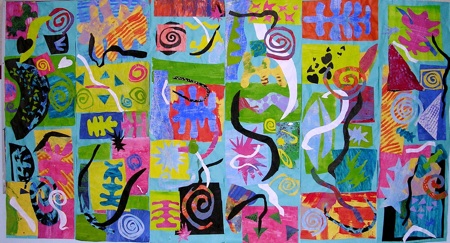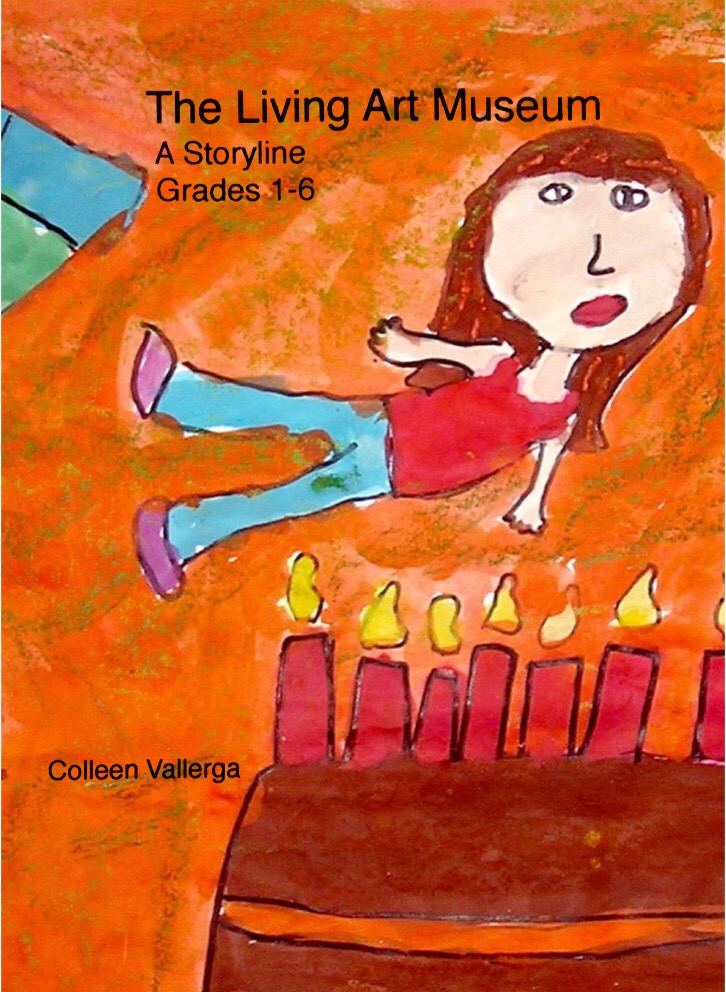The Living Art Museum Storyline®
written by Colleen Vallerga

MatisseSM
Henri Matisse Mural from the Living Art Museum Storyline
The Living Art Museum Storyline is designed to give students an opportunity to develop their own artistic styles as they study the masters, explore the use of the elements of art and design, and experiment using their styles and techniques.
“What I do is the result of reflection and study of the great masters.”
– Edgar Degas

Grades: 1-6
Total Number of Pages: 222
PURCHASE DETAILS
PDF Manual -$60.00-The PDF will be emailed to you once the order is received.
Storyline Overview
The Living Art Museum Storyline begins with a hook. A backdrop of the painting Dance in the City by Renoir, is hung on a bulletin board. Two models are standing in front of the backdrop, dressed and posed with their arms around each other, just as Renoir painted them. Waltz music begins to play, and the characters glide about the floor. When the music stops, they move back to their places in the painting. A few seconds pass and they step out and introduce themselves. They tell enchanting stories of their evening in Paris, 1883.
When they finish, the models pause and come out of character. They introduce themselves as art experts from The Living Art Museum. They tell the history of Renoir’s life, and classify and critique his painting. They explain what their job as an art expert at the museum entails.
Before they leave, the models invite the students to create their own Living Art Museum and leave them with directions on how this can be accomplished.
Students accept the challenge and the study begins. Writing, poetry, music, and drama are integrated into the Storyline. An incident occurs during each artist study. In the context of creating an art museum, students acquire an in-depth art background as they learn to describe, analyze, interpret, and judge works of art.
Art projects are designed by the students using their growing knowledge of the elements of art, design, and artist techniques. Sample, student-designed, art projects, are presented in the book.
Following the Storyline, students are ready to build on the ideas they have learned and experienced. The study of the masters has provided them with models for technique and style. Now the students are ready to use their mentors’ ideas as a framework on which to climb to new levels of thinking and learning in all areas of study.
“To draw you must close your eyes and sing.”
– Pablo Picasso
Standards and Instruction Covered
Common Core Language Arts Standards
Reading Literature
- Key Ideas and Details
- Craft and Structure
- Integration of Knowledge and Ideas
Reading Informational Text
- Key Ideas and Details
- Craft and Structure
- Integration of Knowledge and Ideas
Speaking and Listening
- Comprehension and Collaboration
- Presentation of Knowledge and Ideas
Writing
- Text Types and Purposes
- Production and Distribution of Writing
- Research to Build and Present Knowledge
Language
- Vocabulary
Social Science Standards (Oregon Department of Education)
- Historical Knowledge
- Historical Thinking
- Social Science Analysis
- Multicultural Studies
- Geography
- Community Engagement
Health Education Standards (Oregon Department of Education)
- Promotion of Mental, Social and Emotional Health
Art Standards (Oregon Department of Education)
- Visual Art: Anchor Standards 1-11
- Theater
- Music
- Dance
Technology

